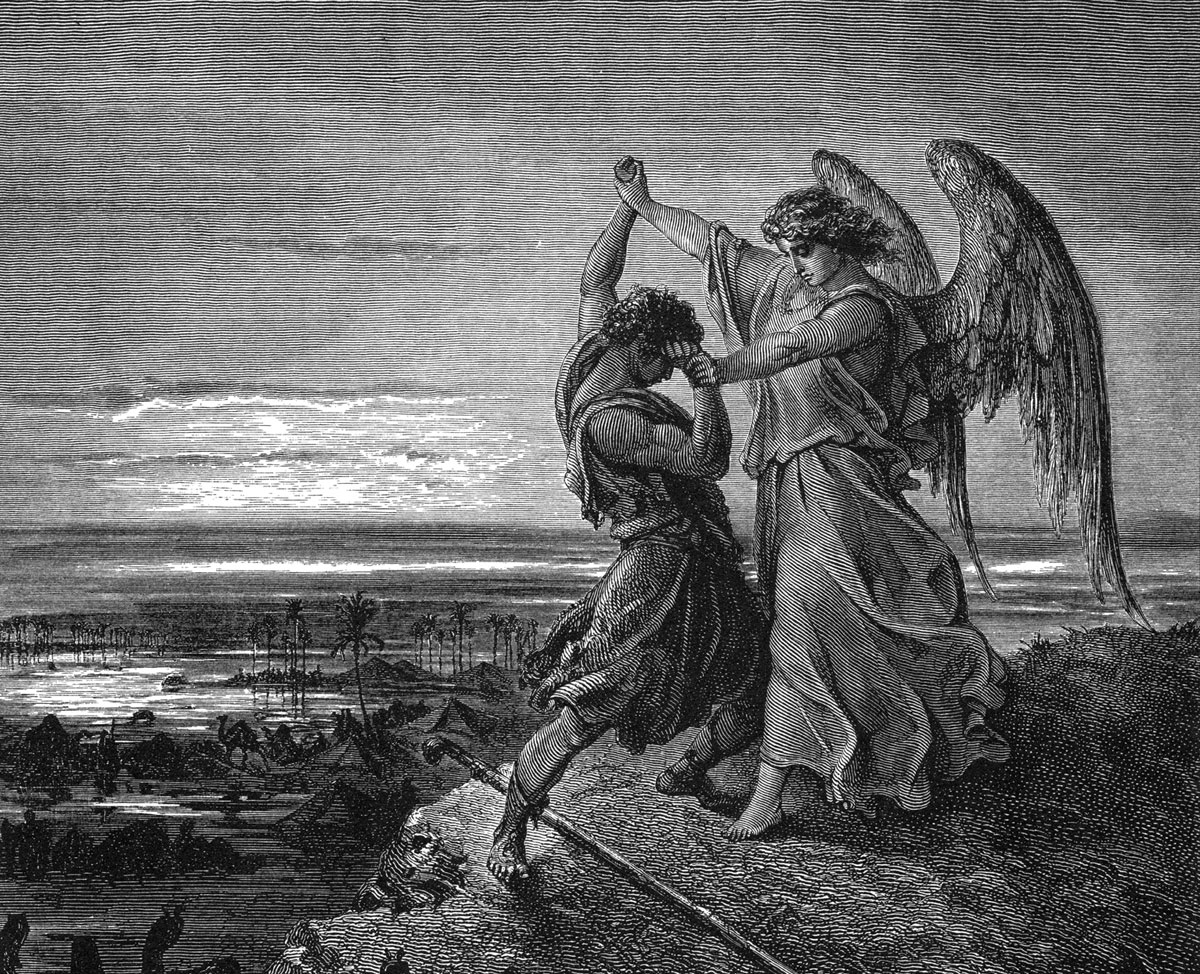The Prayer of the Publican
A Simple Parable Shows Us the Heart of the Gospel
by Patrick Henry Reardon
Virtually from the beginning, it would seem, Christians sensed that the Lord’s account of the two men who went up to the temple to pray contained some of the most important lessons they were obliged to learn. None of them would have disagreed with Gregory of Nyssa that the parable’s teaching about humility and contrition of heart embodied the major characteristic of a true disciple of Christ.1
This impression is confirmed by traditional Christian lectionaries. Though found in only one of the Gospels (Luke 18:9–14), the parable of the Pharisee and the Publican was a passage that believers read often, and traditionally they took care to see that it was proclaimed at the celebration of the Holy Eucharist on one Sunday each year. Among medieval Western Christians the two readings assigned for that Sunday appropriately juxtaposed the humility of the Publican with St. Paul’s statement that he was “the least of the Apostles” (1 Corinthians 15:9).2 The parable was further set in a context of other rich biblical passages on prayer, adorned in beautiful chant renditions.3
In the lectionary tradition of the East this parable is even more strategically structured into the format of the liturgical year. “The Sunday of the Pharisee and the Publican” has remained, for many centuries, the first day of three weeks especially designed to prepare Christians for the Lenten fast.4 The entire first week is known as the prophonisimon, or “herald,” because it functions as a general introduction to the whole paschal cycle.5 Even the usual fasting on Wednesday and Friday is prohibited during this week, as the Church soberly reflects on the Pharisee’s boast that he fasted twice a week. Thus, the emphasis in the Eastern lectionary choice is on simple faith, profound humility and utter dependence on God’s forgiving grace, the very heart of the Christian life. Even before the Lenten fast begins, Eastern Orthodox Christians are robustly reminded that salvation is rooted, not in human striving, but in the divine compassion for sinners. To imagine otherwise, they are warned, is to put themselves in the very precarious place of the proud Pharisee.6
The following reflections on the parable of the Pharisee and the Publican will examine some of the ways in which the story has functioned, over the centuries, in Christian teaching on prayer and the ascetical life, beginning with the Gospel of Luke itself.
The Context in Luke
The tone and sometimes even the structure of the parable of the Pharisee and the Publican bear striking affinities to other passages in Luke. For example, the parable’s closing statement, about the humbling of the self-exalting and the exalting of the humble, is identical with 14:11, the final verse of the Lord’s exhortation about seeking the lower place at table. In fact it is a theme that Luke establishes early, with the song of Mary in 1:52. Again, the differing features and fates of the two men in the temple remind the reader of the opposition between the Rich Man and Lazarus in 16:9–31; each story has to do with the divergence of the divine judgment from the human.7
Even clearer, perhaps, is our parable’s resemblance to the story of the Prodigal Son in 15:11–32. Both narratives elaborate differences between a self-righteous keeper of the Law and a miserable offender pleading for, and relying entirely upon, forgiveness and grace. Similarly, the humble contrition of the Publican resembles that of the repentant woman in 7:36–50,8 while his gentle confidence in the divine mercy is like that of the chronically bleeding woman in 8:43f.9 Most of all, however, the petition of the Publican in the temple closely resembles the prayer of the Thief on the Cross in 23:42; since neither man could bring to God anything but a plea for divine mercy, their cases are precisely parallel.10
This parable also is one of several specifically Lukan passages dealing with prayer. Luke is the only evangelist, for example, to picture Jesus at prayer during his baptism (3:21), at the transfiguration (9:28f.), in preparation for the calling of the Twelve (6:12), and just prior to the giving of the Lord’s Prayer (11:1). Luke’s Gospel begins (1:10) and ends (24:53) with prayer. Moreover, into her regular and standard formulations of worship the Church has, virtually from the beginning, incorporated certain specific prayers found only in Luke: the Magnificat (1:47–55), the Benedictus (1:68–79), the Gloria in Excelsis (2:14), and the Nunc Dimittis (2:29–32).11 In addition to Luke’s Gospel, his Acts of the Apostles speaks of prayer in 14 of its 28 chapters. Prayer is obviously a major preoccupation of Luke.
Within his Gospel, however, chapters 11 and 18 are concerned with prayer in a more concentrated way. Chapter 11 begins, once again, with Jesus at prayer, a scene that prompts the disciples to request that he teach them also the proper way to pray. Thus is introduced Luke’s version of the Lord’s Prayer, which is promptly followed by two further dominical teachings on the subject. The first (11:5–8), specific to Luke, is the parable of the importunate seeker who comes and bothers his friend at midnight. The man’s request is granted because of his continued asking, seeking and knocking. This emphasis on repetition introduces the next dominical teaching on prayer (11:9–13), the famous “ask, seek, knock” sequence, found likewise in Matthew 7:7–11.
Patrick Henry Reardon is pastor emeritus of All Saints Antiochian Orthodox Church in Chicago, Illinois, and the author of numerous books, including, most recently, Out of Step with God: Orthodox Christian Reflections on the Book of Numbers (Ancient Faith Publishing, 2019).
subscription options
Order
Print/Online Subscription

Get six issues (one year) of Touchstone PLUS full online access including pdf downloads for only $39.95. That's only $3.34 per month!
Order
Online Only
Subscription

Get a one-year full-access subscription to the Touchstone online archives for only $19.95. That's only $1.66 per month!
bulk subscriptions
Order Touchstone subscriptions in bulk and save $10 per sub! Each subscription includes 6 issues of Touchstone plus full online access to touchstonemag.com—including archives, videos, and pdf downloads of recent issues for only $29.95 each! Great for churches or study groups.
Transactions will be processed on a secure server.
more from the online archives

24.6—Nov/Dec 2011
Liberty, Conscience & Autonomy
How the Culture War of the Roaring Twenties Set the Stage for Today’s Catholic & Evangelical Alliance by Barry Hankins
calling all readers
Please Donate
"There are magazines worth reading but few worth saving . . . Touchstone is just such a magazine."
—Alice von Hildebrand
"Here we do not concede one square millimeter of territory to falsehood, folly, contemporary sentimentality, or fashion. We speak the truth, and let God be our judge. . . . Touchstone is the one committedly Christian conservative journal."
—Anthony Esolen, Touchstone senior editor









